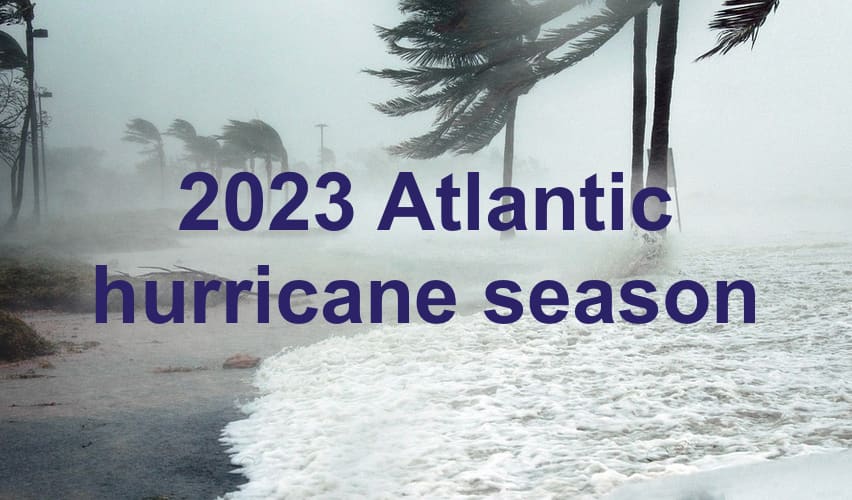Citing warm Atlantic SST’s, TSR raises forecast for 2023 hurricanes and landfalls

Saying that warm sea surface temperatures in the tropical Atlantic will counteract the increased vertical wind shear and stronger trade winds that occur under El Niño conditions, forecast group Tropical Storm Risk (TSR) has now raised its forecast for the 2023 Atlantic hurricane season.
Back in April, TSR issued its first pre-season forecast for the Atlantic hurricane season, calling for 12 named tropical storms, 6 hurricanes and 2 major hurricanes of Category 3 or greater winds to form during the 2023 Atlantic hurricane season, with Accumulated Cyclone Energy (ACE) of 84 generated.
Then at the end of May, it’s final pre-season update, it increased the forecast for the 2023 Atlantic hurricane season slightly, calling for 13 named storms, 6 hurricanes, and 2 major hurricanes of Category 3 or above.
At that time, the Tropical Storm Risk (TSR) forecast team was already calling for the tropical North Atlantic and Caribbean Sea waters to be slightly warmer than normal by August-September 2023. But it was not highlighting that as a factor that could counteract the suppressing effects of El Nino related shear.
Now, following on the heels of the Colorado State University tropical forecasting team, the TSR team has lifted its forecast.
The new forecast from TSR calls for the 2023 Atlantic hurricane season to feature 17 named tropical storms, 8 hurricanes and 3 major hurricane of Category 3 or more strength, with ACE now forecast at 125, so slightly above normal.
They now give a 32% probability of an above-normal North Atlantic ACE in 2023, a 50% likelihood of a near-normal ACE, and only an 18% chance of a below-normal ACE season.
While the number of tropical storms has been elevated, this is largely due to the activity seen to-date, which TSR calls “exceptional”.
But the fact the number of hurricanes has been increased by 2 and major hurricanes by 1, is perhaps more notable.
“TSR’s reasons for raising its forecast is due to the warm sea surface temperatures in the tropical Atlantic and the exceptional development of two named storms in the tropical Atlantic in June. Warm sea surface temperatures in the tropical Atlantic are expected to counteract the normally suppressing effects of increased vertical wind shear and stronger trade winds from the developing El Niño,” the forecast explained.
Adding that, “Pre-August development of a named storm in the tropical Atlantic tends to be followed by a near normal or active hurricane season.”
Also saying, “It should be noted that sizable uncertainties still remain. These include the forecast strength of El Niño Southern Oscillation and how warm the tropical Atlantic will be in August-September. Also variance exists in the level of hurricane activity possible from the same climate factors and due to potential influences from variables which cannot be predicted, such as Saharan air outbreaks over the tropical Atlantic.”
The forecast now calls for 4 tropical storms and 2 hurricanes to make landfall in the United States during the 2023 hurricane season.
That is also above longer-term averages, although slightly below the 10-year trend and up 1 on both sides from the end of May forecast.
The TSR forecast, like the CSU one before it, is calling for the chances of landfall being higher, while activity levels in terms of hurricanes that will form are also more elevated than their previous forecasts.
Adding in the new TSR forecast updates our Artemis average, across the forecasters we track, to 15 named storms (flat), 8 hurricanes (up 1) and 3 major hurricanes (flat), slightly above the near-term average.
Track the 2023 Atlantic tropical storm and hurricane season on our dedicated page and we’ll update you as new information emerges.






